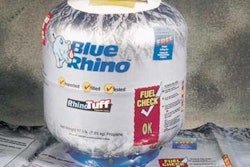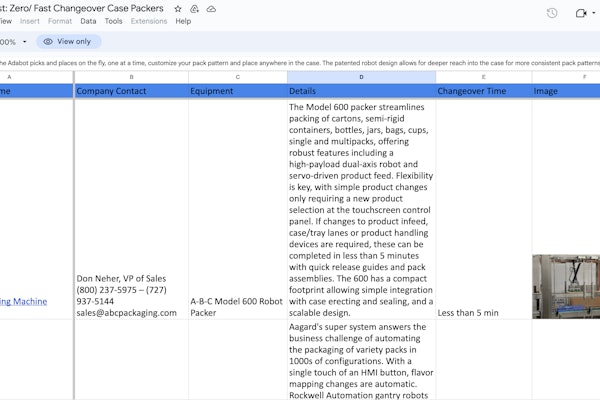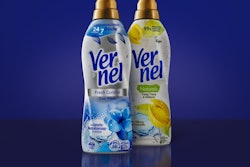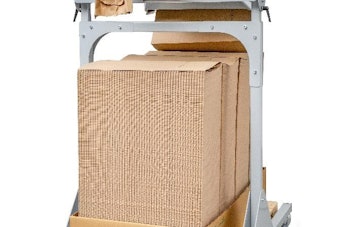There will be numerous instances—too numerous as far as the industry is concerned—where drug companies will have to secure prior approval from the FDA before using new packaging. That is the upshot of the Nov. 19, 1999, FDA guidance, which sorts “post-approval” packaging changes into levels of concern and assigns notification requirements for each.
Rich Hollander, manager of packaging services for Pfizer, Inc., New York, NY, says, “The document does a lot of great things, such as making it easier to switch film and foil. That is a real big coup; it was the biggest thing the PhRMA workgroup wanted.” PhRMA is the Pharmaceutical Research & Manufacturers of America; Hollander heads its packaging task force. But Hollander adds, “Many changes that packagers might need to make are not addressed in any of the four categories.” The categories list drug therapies by level of risk.
A senior packaging engineer at a major OTC drug manufacturer was more negative. He says the guidance “didn’t do a whole lot.” That is because it does not address some basic core problems, such as the absence of a United States Pharmacopeia (USP) monograph for the use of polyvinyl chloride in a blister pack. Because no monograph exists, a company has to win prior approval from the FDA before it can substitute one PVC resin for another. If there were a USP monograph, the company could make the switch and simply alert the FDA in the annual report the company sends in.
Similarly, the USP lists only one test method for determining the water vapor transmission rate (WVTR) for a blister pack. The OTC packaging executive says he can use cheaper, faster WVTR methods, but that FDA chemists look suspiciously at the resulting data and may challenge the application.
Regulatory relief
The post-approval guidance was issued because of a congressional directive to FDA mandating regulatory relief. Today, when a drug company wants to make a major packaging change to a drug already on the market—defined as a change that could have a substantial adverse effect on the identity, strength, quality, purity or potency of the product—it must obtain prior approval. The FDA typically takes six months to give that approval.
Moderate package changes require a notification—called Changes Being Effected (CBE)—and, in some instances, a 30-day wait. Insignificant changes can be made without any FDA clearance; they just have to be listed in the annual report the company sends to the FDA.
When the guidance was issued in draft form last summer, drug companies flooded the FDA with three main complaints. Many packaging changes were not mentioned in any of the four risk categories. Also, there were far too many listings in the “prior-approval” category and too little specificity on what was in the CBE category. In the final guidance issued on Nov. 19, the FDA does little to assuage those concerns.
For example, there are still the same number of packaging changes listed in the “prior-approval” category. In fact, an additional category has been added: “A change to a new container closure system if the new container closure system does not provide the same or better protective properties than the approved container closure system.”
Small improvements
This addition reflects the FDA’s apparent strategy of trying to defuse industry anger by making some small improvements to the guidance. But Pfizer’s Hollander has mixed emotions. He says that on one hand, the addition is good because it at least holds out the premise that manufacturers can switch to less protective packaging if they have stability data to justify the switch. But he adds, “Just because we have decreased the wall thickness for a polyethylene container with 60 pills, for example, doesn’t mean there is any stability impact.”
Most packaging people would have preferred that the FDA delete some of the prior-approval listings. Laurie Smaldone, senior vice president of worldwide regulatory affairs for Bristol-Myers Squibb Pharmaceutical Research Institute, Princeton, NJ, was one of them. She wanted the FDA to take changes in a valve or actuator of a metered-dose inhaler out of the prior-approval category.
The product is not being changed and is not affected by its position in the container, she argues. “Container integrity should sufficiently support the change.” But the final guidance makes no change there.
Still, the FDA made positive clarifications of some prior-approval requirements. It cleared up confusion about whether a manufacturer can switch to certain inks and adhesives. In the draft, the FDA said that a company would need prior approval for a change to an ink or adhesive in a semi-permeable package “that has never been approved by CDER for use with that particular liquid or semi-solid dosage form...”
Hollander and others took that to mean that any change to the adhesive system would require a prior approval because of the reference to “that particular liquid or semi-solid dosage form.”
In the final guidance, the FDA cleared that up. It added language saying it meant prior approval would only be needed when the new ink or adhesive had not been approved “in a CDER-approved product of the same dosage form, same route of administration...”
Details on what kinds of packaging changes would qualify as either CBE/30 or CBE remain sparse. That is an important issue because a company might use its best judgment and guess that a particular packaging change is CBE. If so, it could send its notification to the FDA with the expectation of taking the product to market the next week. Then it might hear back from an FDA examiner that the change really required prior approval, which would in effect crush the company’s imminent marketing plans.
A single guidance
Unhappiness with this “post-approval” guidance among prescription and OTC packagers has simply rekindled a desire to see the FDA issue one big packaging guidance document that touches on all eventualities.
Besides the post-approval and pre-approval guidance documents (see Packaging World, Jan '00, p. 22 or packworld.com/go/fda), the FDA has a separate guidance document in the works that will cover investigational or experimental new drugs. There is also a separate stability guidance, but it has been only in draft form since 1991. Some drug product/package categories such as nasal sprays have their own guidance documents. A packaging director for a pharmaceutical maker has an almost impossible task keeping up with FDA requirements.
Well, relief may be on the way. It is being called PACPAC. The idea is to throw all the guidance documents on packaging changes to existing drugs (as opposed to new drugs) between the same covers. The FDA is holding a meeting at the end of May to get PACPAC off the ground. But industry packaging executives understand that given the FDA’s track record, liftoff for PACPAC may take as much prep time as any NASA shuttle launch.
See sidebar to this article: Safer institutional drug packaging?






















